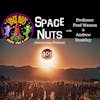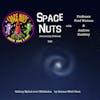#390: Wormholes, Black Holes, and Blue Giants: Your Space Questions Answered

Are you ready to uncover the mind-bending secrets of our universe? Join us as we reveal the unexpected truth about the formation of habitable planets and the potential for multiple habitable worlds within a single solar system. You won't believe how...
Are you ready to uncover the mind-bending secrets of our universe? Join us as we reveal the unexpected truth about the formation of habitable planets and the potential for multiple habitable worlds within a single solar system. You won't believe how many habitable planets could exist in the perfect cosmic sweet spot. And as we delve deeper into this cosmic mystery, prepare to be amazed by the surprising possibility of habitable moons orbiting gas giants. The answer lies in the unexplored realms of our vast universe, waiting to be unraveled. Stay tuned for an eye-opening journey through the cosmos that will challenge everything you thought you knew about planetary systems and cosmological potential. Get ready to expand your understanding of the universe in ways you never imagined. In this episode, you will be able to: · Explore the mysteries of fast blue transient explosions and their impact on our understanding of the universe. · Discover the fascinating Glass Z 12 high-redshift galaxy, offering insights into the early universe and cosmic evolution. · Grasp the uncertainties in astronomy research and how they drive innovation and breakthrough discoveries. · Uncover the complexity of the early universe and gain a deeper appreciation for its profound impact on cosmic evolution. The bottom line is Dave's right to question this, because we can't guarantee what the universe is going to do. We don't have any sort of control over that. All we can do is observe what it's doing now, and through the magic of the fact that we can look back in time, we get a good idea of what it's done in the past. - Fred Watson Glass Z 12 High-Redshift Galaxy Glass Z 12 is a high-redshift galaxy, noted for its advanced state of maturity shortly after the Big Bang. Its study, largely facilitated by the GrISM lens Amplified Survey from Space (GLASS) using the James Webb Space Telescope, sheds light on the early universe's formation and evolution. Despite the advanced observational technology, the nature of such galaxies holds persisting enigmas, stimulating ongoing research and debates in the astronomical community. The resources mentioned in this episode are: · Visit spacenutspodcast.com to send in your text or audio questions for the show. · Subscribe to the Space Nuts podcast on Apple Podcasts, Spotify, iHeartRadio, or your favorite podcast player. · Stream on demand at bytes.com to listen to the latest episodes of Space Nuts. · Check out the Space Nuts YouTube channel and subscribe for more space-related content. · Explore the Space Nuts website for more information and to send voice messages to the hosts. Timestamped summary of this episode:
00:00:00 - Introduction and Overview
Andrew Dunkley introduces the episode as an all-audience questions episode. He mentions the topics to be discussed, including fast blue transients, ghost galaxies, and the heaviest isotopes in planet formation.
00:02:23 - Fast Blue Transients and Galaxy Development
Derek asks about the cause of fast blue optical transient explosions, referencing the unusual shape of the explosion. Fred Watson discusses the mysterious nature of fast blue optical transients and the potential reasons behind their unique properties.
00:09:44 - Early Universe and Galaxy Evolution
Renny inquires about the development of mature galaxies like glass z 13 in the early aftermath of the Big Bang. Fred Watson explains the significance of glass z 12 as an early galaxy and addresses the possibility of wormholes and membrane theory in relation to galaxy evolution.
00:17:08 - Expansion of the Universe and Dark Energy
Dave from Calgary asks about the expansion of the universe and its acceleration. He questions whether the universe will ever slow down due to dark energy. Fred Watson discusses the concept of dark energy and explains why the universe's expansion is unlikely to slow down.
00:18:05 - Comparing Bullet Firing with Universe Expansion
Discusses the analogy between bullet firing and universe expansion, highlighting the differences due to space conditions. Emphasizes the uncertainty of the universe's future.
00:23:16 - Universe at Room Temperature
Explores the time when the universe was at room temperature, highlighting the challenges in observing this period due to cosmic microwave background radiation.
00:28:18 - Destruction of Black Holes
Examines the possibility of black hole destruction, explaining the slow evaporation process through Hawking radiation and the extreme conditions required for their destruction.
00:31:45 - Ghost Galaxies and Dark Matter
Considers the relationship between normal matter in ghost galaxies and the existence of dark matter, emphasizing the minor impact on our understanding of dark matter in the universe.
00:34:59 - Formation of Black Holes and Gravitons
Discusses the theoretical concept of gravitons and their inability to clump together to form black holes, highlighting the distinction between force carrier bosons and matter particles.
00:36:45 - Garrett's Question on Proto Earth Formation
Garrett asks about the differentiation phase of proto-Earth's formation and why heavier isotopes did not sink to the center. Fred discusses nuclear fission on Earth and how it impacts the planet's activity and warmth.
00:41:35 - Martin's Question on Habitability of Planets
Martin asks about the maximum number of habitable planets in a solar system and the possibility of habitable moons orbiting a gas giant. Fred discusses the potential for multiple habitable planets and moons within a star's habitable zone.
00:43:22 - Possibility of Multiple Habitable Planets
Andrew and Fred explore the physics behind the number of habitable planets in a solar system and the potential for multiple habitable objects sharing the same orbit. They also touch on the definition of habitability and life.
00:48:22 - Call for Questions and Social Media Engagement
Andrew encourages listeners to send in their questions for future episodes and highlights the importance of social media engagement. Fred expresses enthusiasm for diverse and unexpected questions.
00:49:34 - Conclusion and Farewell
Andrew thanks Fred and Hugh, the studio engineer, for their participation in the episode. He wraps up the show and invites listeners to tune in for the next episode of Space Nuts.
Become a supporter of this podcast: https://www.spreaker.com/podcast/space-nuts--2631155/support.
New to Space Nuts?
Here are some great episodes to start with.






































